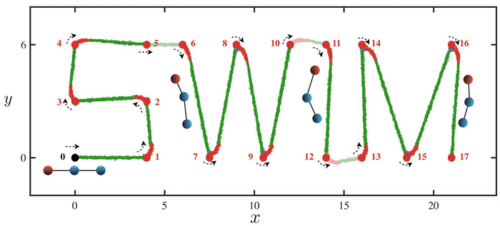Researchers of Santa Clara University, New Jersey Institute of Technology, and the University of Hong Kong have successfully used Deep Reinforcement Learning to teach microrobots how to swim, which represents a significant advancement in the field of micro swimming.

The team was able to successfully train a basic microswimmer to swim and navigate in any direction by fusing reinforcement learning and artificial neural networks. The swimmer receives feedback on how effective specific movements are when he makes them. Eventually, the swimmer gradually picks up how to swim depending on his interactions with the surroundings. The AI-powered swimmer can automatically navigate to any desired site by adaptively alternating between different locomotor actions. The researchers used the swimmer’s impressive abilities to prove that it can follow a complex pattern without being specifically trained. They also showed the swimmer’s expertise in navigating through disturbances brought on by outside fluid fluxes
Reinforcement learning is a machine learning optimization technique that can enable learning behaviors in artificially engineered systems. It is inspired by the adaptive behavior of living organisms. In real-world learning (RL), an agent observes the state of an environment and decides which actions to take to complete a task that is specified by a reward signal, which is often predetermined. The reward signal is employed to train the agent to take activities that will maximize the expected future benefits, allowing the agent to improve upon the previous performance of the job.
“Being able to swim at the micro-scale by itself is a challenging task,” said On Shun Pak, associate professor of mechanical engineering at Santa Clara University. “When you want a microswimmer to perform more sophisticated maneuvers, the design of their locomotory gaits can quickly become intractable”.
“This work is a key example of how the rapid development of artificial intelligence may be exploited to tackle unresolved challenges in locomotion problems in fluid dynamics,” said Arnold Mathijssen, an expert on microrobots and biophysics at the University of Pennsylvania, who was not involved in the research. “The integration between machine learning and microswimmers in this work will spark further connections between these two highly active research areas.”
Click here for the published research paper






